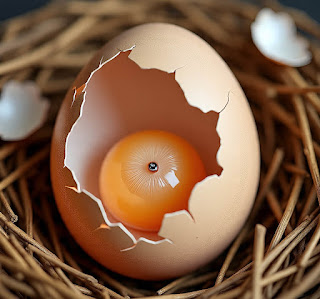Dove breeding is a fascinating yet delicate process. While many birds like pigeons hatch in 17–19 days, doves have a more extended incubation and post-hatch care period that collectively stretches across 30 to 32 days—sometimes longer depending on species and environment.
Understanding this lifecycle helps breeders and bird lovers improve hatch rates, reduce chick mortality, and support hand-raising or wild rescue scenarios.
In this guide, you’ll learn:
- The complete dove hatching cycle
- Daily developmental milestones
- Best incubation practices (natural & artificial)
- Troubleshooting failed hatches
- Post-hatch care and growth phases
🥚 Phase 1: Egg Laying and Fertility (Days 1–2)
✅ Key Facts:
- Doves typically lay 2 eggs per clutch
- Eggs are laid 1–2 days apart
- Eggs are white, elliptical, and weigh around 3–4 grams
🔍 How to Know if Eggs Are Fertile:
- Breeding pair shows mating behavior and nest defense
- Use candling on Day 4–5 to check for blood vessels and embryo
- Infertile eggs remain clear even after several days
♨️ Phase 2: Incubation Period (Days 3–15)
🧺 Natural Incubation:
- Both parents share incubation duties (male during the day, female at night)
- Eggs kept at 38.3°C (101°F) and 50–60% humidity
💡 Artificial Incubation Tips:
| Parameter | Ideal Value |
|---|---|
| Temperature | 99.5°F (37.5°C) |
| Humidity | 55% |
| Egg Turning | 3–5 times per day |
| Incubator Type | Forced-air preferred |
🧬 What Happens Inside the Egg (Key Milestones):
- Day 4: Blood vessels visible
- Day 7: Beak & limb formation starts
- Day 10: Feathers begin developing
- Day 13–14: Embryo fills the egg
- Day 15: Chick begins to position for hatching
🐣 Phase 3: Pre-Hatch Movement & Internal Pipping (Days 16–17)
🐥 Pre-Hatch Behavior:
- Chick breaks into the air cell to breathe
- Chirping and wobbling inside the egg may be noticeable
- Internal pipping may begin at Day 16 or 17
🚨 Common Issues:
- If humidity is too low, shrink-wrapping may occur
- If temp is too high, chick may develop too fast and die prematurely
🔄 Phase 4: External Pipping and Hatch (Days 18–20)
🐣 Signs of Hatching:
- First external pip hole on the shell
- Chick rotates and "zips" the shell
- Takes 8–24 hours from pip to full hatch
DON’T assist unless over 30 hours have passed with no progress AND chick is in distress.
👶 Phase 5: Post-Hatch Chick Care (Days 21–32)
Doves are altricial birds, meaning they are born blind, featherless, and fully dependent.
👩👦 Parental Feeding:
- Fed crop milk (secreted from parents’ crop) for first 7–10 days
- By Day 10–12, parents transition to regurgitated seeds
- Fledging occurs around Day 28–32
🛠️ Hand-Feeding (if parents abandon nest):
- Use commercial dove or pigeon formula
- Feed with a small syringe or crop needle
- Feed every 2–3 hours during the day
📆 Dove Lifecycle Summary: Day-by-Day Breakdown
| Day | Event/Development |
|---|---|
| 1–2 | Egg laid, white & smooth |
| 4 | Blood vessels visible (candling) |
| 7 | Limb & organ development visible |
| 10 | Feathers, heartbeat, movement |
| 15 | Embryo fills egg, position shifts |
| 16 | Air cell pip, chirping starts |
| 18 | External pip, zipping begins |
| 19–20 | Hatch, wet chick, starts drying |
| 21–28 | Fed crop milk, eyes open Day 5–7 |
| 28–32 | Fledging, feathers develop fully |
🧪 Tips to Boost Hatch Success
Ensure Nest Stability
Doves abandon nests if disturbed. Keep handling to a minimum.
Prevent Chilling
Even a few minutes of cold exposure can kill embryos.
Humidity Control
Maintain 50–60% pre-hatch, 65–70% during hatching.
Minimize Egg Rotation After Day 14
Chicks begin positioning inside—too much movement can disorient them.
Supplement Parent Diet
Feed parents high-protein seeds (millet, canary seed) plus calcium.
⚠️ Troubleshooting Failed Hatches
| Problem | Likely Cause |
|---|---|
| Clear eggs at Day 7 | Infertility or very early death |
| Embryo dies before hatch | High/low temperature or bacteria |
| Chick pips but dies | Low humidity, weak chick, shrink-wrap |
| Parents abandon eggs | Stress, predator threat, low nutrition |
🧠 Final Thoughts
Dove egg incubation and hatching is a 30–32 day journey that blends patience, precision, and care. Whether you're supporting a wild rescue, managing a pet pair, or breeding as a hobby, understanding each stage is vital.
When done right, this delicate process rewards you with healthy, vibrant fledglings ready to take their place in the sky.

